Mechanical and Post-Cracking Characteristics of Fiber Reinforced Concrete Containing Copper-Coated Steel and PVA Fibers in 100% Cement and Fly Ash Concrete
Abstract
1. Introduction
2. Materials and Methods
2.1. Material Properties
2.2. Mix Proportion
2.3. Mixing, Casting, and Testing of Specimens
2.4. Post-Cracking Characteristics
3. Results and Discussion
3.1. Effects of Fibers on the Workability (Slump) of Concrete
3.2. Effects of Fibers and Fly Ash Content on the Compressive Strength of Concrete
3.3. Effects of Fibers on Tensile and Flexural Strength
3.4. Flexural and First-Crack Toughness, Indicies, and Residual Strength Factor
3.5. Elastic Modulus and Ductility Index
4. Conclusions
Author Contributions
Funding
Informed Consent Statement
Conflicts of Interest
References
- Gettu, M.E.; Bazant, R.; Karr, Z.P. Fracture Properties and Brittleness of High Strength Concrete. ACI J. Mater. 1990, 87, 608–618. [Google Scholar]
- Kodur, V. Fire performance of high-strength concrete structural members. In Construction Technology Updates (NRC-CNRC); National Research Concil of Canada: Ottawa, ON, Canada, 1999; p. 4. [Google Scholar]
- Kosa, K.; Naaman, A.E. Corrosion of Steel Fiber Reinforced Concrete. ACI Mater. J. 1990, 87, 27–37. [Google Scholar]
- Görander, N.; Halldén, C. Crack Width Profiles for Fibre- Reinforced Concrete Elements with Conventional Reinforcement; Chalmers University of Technology: Gothenburg, Sweden, 2015. [Google Scholar]
- Abdul-Ahad, R.B.; Aziz, O.Q. Flexural strength of reinforced concrete T-beams with steel fibers. Cem. Concr. Compos. 1999, 21, 263–268. [Google Scholar] [CrossRef]
- Hooton, R.; Khaloo, A.; Kim, N. Mechanical Properties of Normal to High-Strength Steel Fiber-Reinforced Concrete. Cem. Concr. Aggreg. 1996, 18, 92. [Google Scholar] [CrossRef]
- Song, P.S.; Hwang, S. Mechanical properties of high-strength steel fiber-reinforced concrete. Constr. Build. Mater. 2004, 18, 669–673. [Google Scholar] [CrossRef]
- Gherman, O.E.; Constantinescu, H.; Gherman, M.C. Mechanical Properties of High Strength Steel Fiber Reinforced Con-crete. In Proceedings of the 16th International Multidisciplinary Scientific GeoConference 2016, Albena, Bulgaria, 30 June–6 July 2016; ProQuest: Ann Arbor, MI, USA, 2016. [Google Scholar]
- Balouch, S.U.; Forth, J.P.; Granju, J.-L. Surface corrosion of steel fiber reinforced concrete. Cem. Concr. Res. 2010, 40, 410–414. [Google Scholar] [CrossRef]
- Vairagade, V.S.; Kene, K.S. Strength of normal concrete using metallic and synthetic fibers. Procedia Eng. 2013, 51, 132–140. [Google Scholar] [CrossRef]
- Ma, Y.-Q. Experimental Study on Mechanical Properties of Steel Fiber Reinforced High-Performance Concrete. Adv. Mater. Res. 2014, 859, 56–59. [Google Scholar] [CrossRef]
- Alhozaimy, A.M.; Soroushian, P.; Mirza, F. Mechanical properties of polypropylene fiber reinforced concrete and the effects of pozzolanic materials. Cem. Concr. Compos. 1996, 18, 85–92. [Google Scholar] [CrossRef]
- Song, P.S.; Hwang, S.; Sheu, B.C. Strength properties of nylon- and polypropylene-fiber-reinforced concrete. Cem. Concr. Res. 2005, 35, 1546–1550. [Google Scholar] [CrossRef]
- Shafiq, N.; Nuruddin, M. Effect of Chopped Basalt Fiber on the Fresh and Hardened Properties of Fly Ash High Strength Concrete. Appl. Mech. Res. 2014, 567, 381–386. [Google Scholar]
- Jiang, C.; Fan, K.; Wu, F.; Chen, D. Experimental study on the mechanical properties and microstructure of chopped basalt fiber reinforced concrete. Mater. Des. 2014, 58, 187–193. [Google Scholar] [CrossRef]
- Choi, J.I.; Lee, B.Y. Bonding properties of basalt fiber and strength reduction according to fiber orientation. Materials 2015, 8, 6719–6727. [Google Scholar] [PubMed]
- Fan, F.L.; Xu, J.Y.; Bai, E.L.; He, Q. Experimental Study on Impact-Mechanics Properties of Basalt Fibre Reinforced Concrete. Adv. Mater. Res. 2010, 168–170, 1910–1914. [Google Scholar]
- Elshekh, A.E.A.; Shafiq, N.; Nuruddin, M.F.; Fathi, A.; Memom, F.A. An experimental study on the effectiveness of chopped basalt fiber on the fresh and hardened properties of high strength concrete. Res. J. Appl. Sci. Eng. Technol. 2014, 7, 3304–3311. [Google Scholar]
- Jalal, A.; Shafiq, N.; Nikbakht, E.; Kumar, R.; Zahid, M. Mechanical Properties of Hybrid Basalt-Polyvinyl Alcohol ( PVA ) Fiber Reinforced Concrete. Key Eng. Mater. 2017, 744, 3–7. [Google Scholar]
- Zeng, C.S.; Gong, M.Z.; Gui, M.M.; Guo, X.Q.; Liu, J.X.; Lin, T.X. Influence of Superplasticizer on Anti-Carbonation Property of Concrete. Appl. Mech. Mater. 2012, 204–208, 3790–3794. [Google Scholar]
- Mohammed, B.S.; Baharun, M.H.; Nurudinn, M.F.; Erikol, O.P.D.; Murshed, N.A. Mechanical Properties of Engineered Cementitious Composites Mixture. Appl. Mech. Mater. 2014, 567, 428–433. [Google Scholar] [CrossRef]
- Li, V.C.; Wang, S. Microstructure variability and macroscopic composite properties of high-performance fiber-reinforced cementitious composites. Probabilistic Eng. Mech. 2006, 21, 201–206. [Google Scholar] [CrossRef]
- Hu, W.; Yang, X.G.; Zhou, J.W.; Xing, H.G.; Xiang, J. Experimental research on the mechanical properties of PVA fiber reinforced concrete. Res. J. Appl. Sci. Eng. Technol. 2013, 5, 4563–4567. [Google Scholar]
- Noushini, A.; Samali, B.; Vessalas, K. Flexural toughness and ductility characteristics of polyvinyl-alcohol fiber reinforced concrete (PVA-FRC). In Proceedings of the 8th International Conference on Fracture Mechanics of Concrete and Concrete Structures, Toledo, Spain, 15 July 2013; CIMNE: Barcelona, Spain, 2013; pp. 1110–1121. [Google Scholar]
- Noushini, A.; Vessalas, K.; Samali, B. Static mechanical properties of polyvinyl alcohol fiber reinforced concrete (PVA-FRC). Mag. Concr. Res. 2014, 66, 1–19. [Google Scholar] [CrossRef]
- Cao, M.; Xie, C.; Li, L.; Khan, M. Effect of different PVA and steel fiber length and content on mechanical properties of CaCO3 whisker reinforced cementitious composites. Mater. Construcción 2019, 69, 200. [Google Scholar] [CrossRef]
- Yao, W.; Sun, W.; Shi, Z.; Chen, B.; Chen, L.; Feng, J. Blast-resistant Performance of Hybrid Fiber-Reinforced Concrete (HFRC) Panels Subjected to Contact Detonation. Appl. Sci. 2020, 10, 241. [Google Scholar] [CrossRef]
- Zahid, M.; Shafiq, N. Effects of Sand/Fly Ash and the Water/Solid Ratio on the Mechanical Properties of Engineered Geopolymer Composite and Mix Design Optimization. Minerals 2020, 10, 333. [Google Scholar] [CrossRef]
- ASTM C 1018-02. Standard Test Method for Flexural Toughness and First-Crack Strength of Fiber-Reinforced Concrete; ASTM: West Conshohocken, PA, USA, 1998. [Google Scholar]
- Hammad, A.J.; Sldozian, R.J.A. Flexural and Flexural Toughness of Fiber Reinforced Concrete- American Standard Specifications Review. Glob. Res. Dev. J. Eng. 2019, 4. [Google Scholar]
- Mudadu, A.; Tiberti, G.; Plizzari, G.A.; Morbi, A. Post-cracking behavior of polypropylene fiber reinforced concrete under bending and uniaxial tensile tests. Struct. Concr. 2019, 20, 1411–1424. [Google Scholar] [CrossRef]
- Zahid, M.; Shafiq, N.; Razak, S.N.A.; Tufail, R.F. Investigating the effects of NaOH molarity and the geometry of PVA fibers on the post-cracking and the fracture behavior of engineered geopolymer composite. Constr. Build. Mater. 2020, 265, 120295. [Google Scholar] [CrossRef]
- Van CHANH, N. Steel fiber reinforced concrete. Semin. Mater. 2004, 108–116. [Google Scholar]
- Yijin, L.; Shiqiong, Z.; Jian, Y.; Yingli, G. The effect of fly ash on the fluidity of cement paste, mortar, and concrete. Proc. Int. Workshop Sustain. Dev. Concr. Technol. 2004, 339–345. [Google Scholar]
- Vilane, B.R.T.; Sabelo, N. The Effect of Aggregate Size on the Compressive Strength of Concrete. J. Agric. Sci. Eng. 2016, 2, 66–69. [Google Scholar]
- Yu, R.; Bao, H.; Jian, Z.; Jialing, W. Experimental study on splitting tensile strength and acoustic emission characteristics of polypropylene fiber concrete. In Proceedings of the 2011 International Conference on Electric Technology and Civil Engineering (ICETCE), Lushan, China, 22–24 April 2011; IEEE: Piscataway, NJ, USA; pp. 5981–5984. [Google Scholar]
- Buratti, N.; Mazzotti, C.; Savoia, M. Post-cracking behavior of steel and macro-synthetic fiber-reinforced concrete. Constr. Build. Mater. 2011, 25, 2713–2722. [Google Scholar] [CrossRef]
- BS EN 1992-1-1: 2004-Eurocode 2: Design of Concrete Structures-Part 1-1: General Rules and Rules for Buildings; European Committee for Standardization (CEN): Brussels, Belgium, 2004.
- Naaman, A.E.; Jeong, S.M. Structural ductility of concret beams pretressed with FRP tendons. In Non-Metallic (FRP) Reinforcement for Concrete Structures: Proceedings of the Second International RILEM Symposium; CRC Press: Boca Raton, FL, USA, 1995; pp. 379–386. [Google Scholar]
- Bouzoubaâ, N.; Zhang, M.H.; Malhotra, V.M. Mechanical properties and durability of concrete made with high-volume fly ash blended cements using a coarse fly ash. Cem. Concr. Res. 2001, 31, 1393–1402. [Google Scholar] [CrossRef]

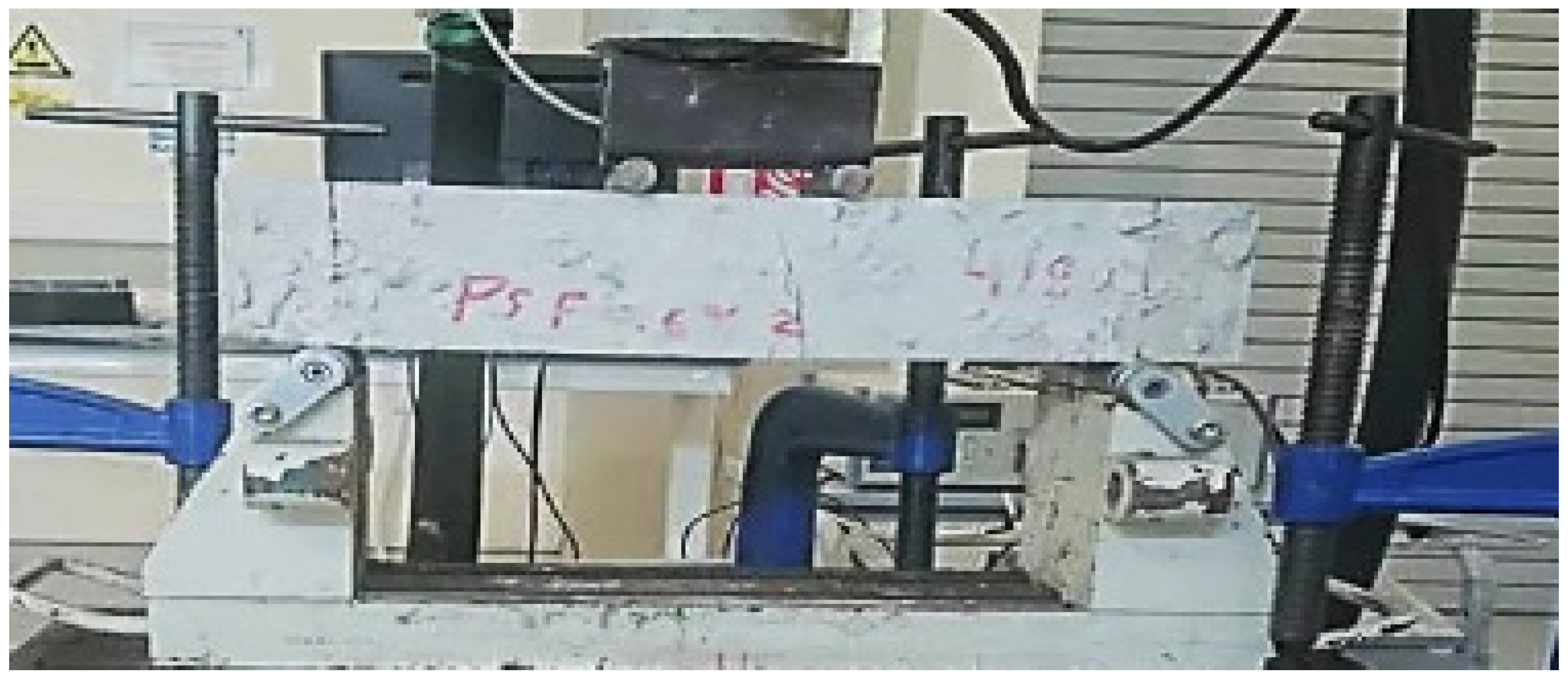


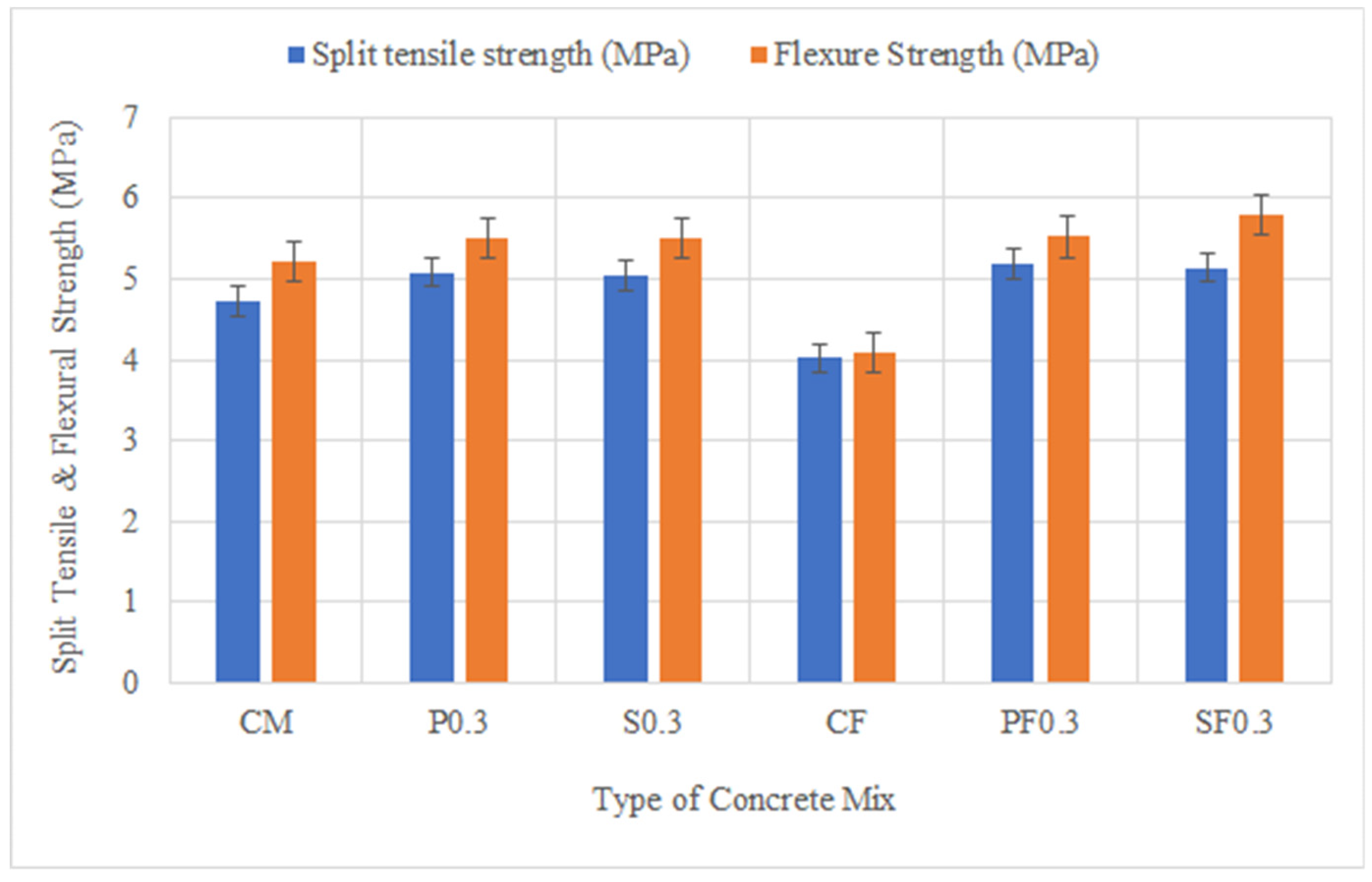
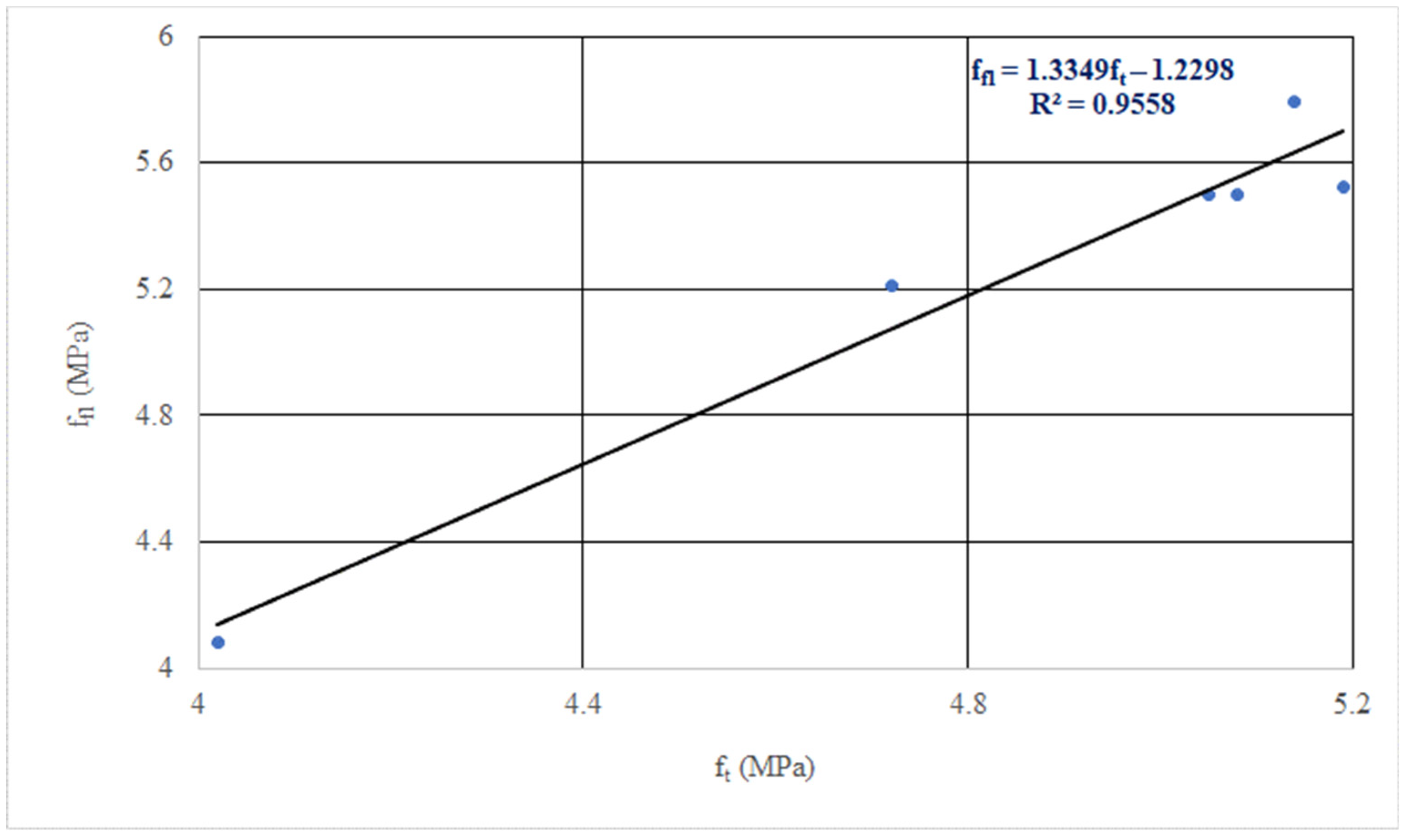
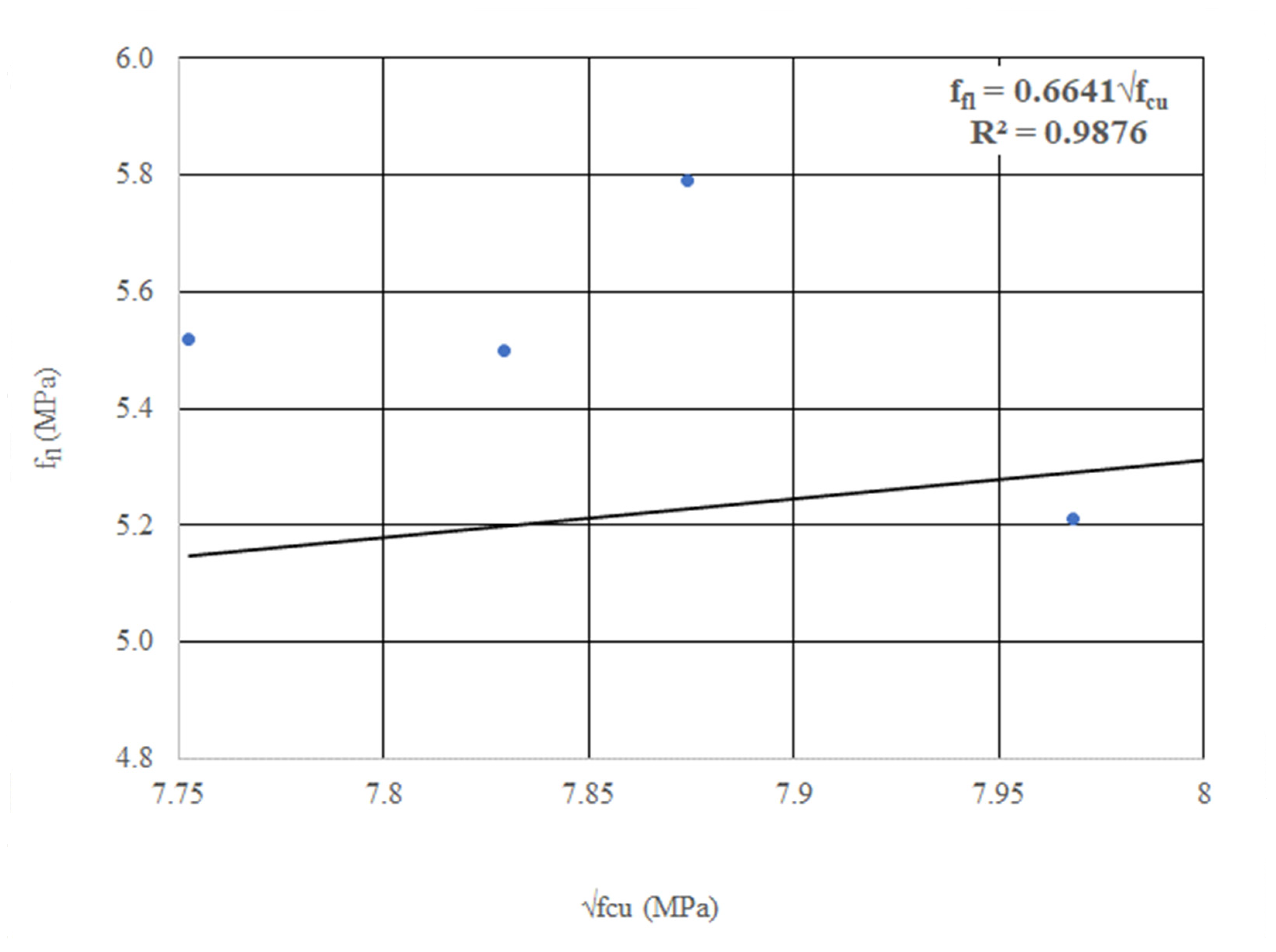
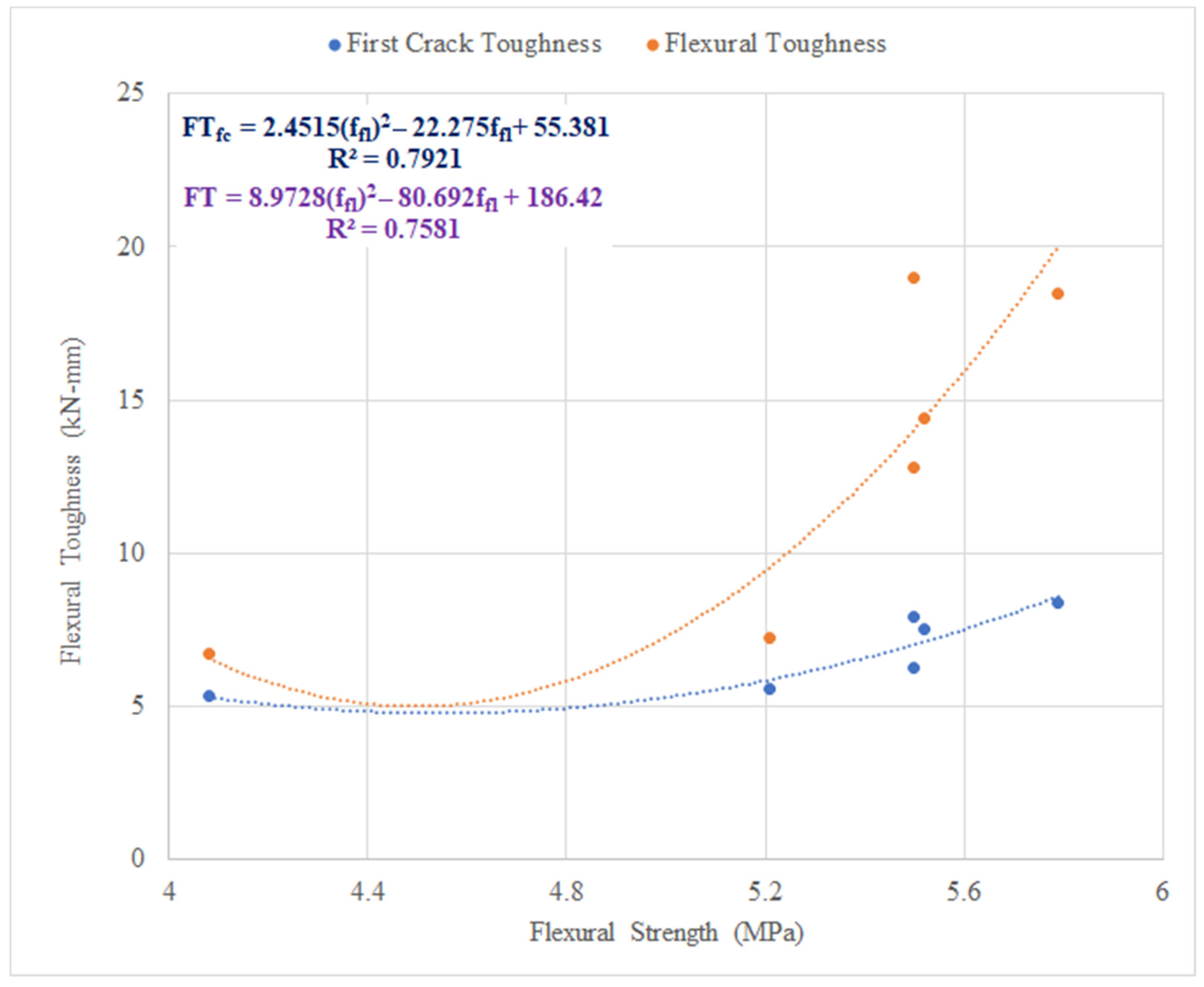

| Properties | Copper Coated Steel (CCS) Fiber | PVA Fiber |
|---|---|---|
| Length (mm) | 20 | 18 |
| Diameter (μm) | 200 | 200 |
| Aspect Ratio (l/d) | 100 | 90 |
| Density (g/cm3) | 7.85 | 1.3 |
| Tensile strength (MPa) | 2300 | 1000 |
| Mix ID | Fiber Content (by Volume) (%) | Cement (kg/m3) | Fly Ash (kg/m3) | Coarse Aggregate (kg/m3) | Fine Aggregate (kg/m3) | W/C Ratio | SP (%) | |
|---|---|---|---|---|---|---|---|---|
| Polyvinyl Alcohol (PVA) | Copper Coated Steel (CCS) | |||||||
| Control Mix (CM) | 0 | 0 | 425 | 0 | 1100 | 705 | 0.4 | 0.35 |
| Fly Ash Contro Mix (CF) | 0 | 0 | 340 | 85 | 1100 | 705 | 0.4 | 0.25 |
| P0.3 | 0.3 | 0 | 425 | 0 | 1100 | 705 | 0.4 | 0.3 |
| S0.3 | 0 | 0.3 | 425 | 0 | 1100 | 705 | 0.4 | 0.5 |
| PF0.3 | 0.3 | 0 | 340 | 85 | 1100 | 705 | 0.4 | 0.3 |
| SF0.3 | 0 | 0.3 | 340 | 85 | 1100 | 705 | 0.4 | 0.5 |
| Mix ID | Compressive Strength, fcu, (MPa) and Strength Efficiency Index (SI) | |||||||
|---|---|---|---|---|---|---|---|---|
| fcu | SI | fcu | SI | fcu | SI | fcu | SI | |
| 3 Days | 7 Days | 28 Days | 56 Days | |||||
| CM | 54.14 | 1.00 | 60.45 | 1.00 | 66.77 | 1.00 | 70.88 | 1.00 |
| P0.3 | 54.25 | 1.00 | 60.45 | 1.00 | 69.00 | 1.03 | 73.61 | 1.04 |
| S0.3 | 58.86 | 1.09 | 65.81 | 1.09 | 72.60 | 1.09 | 78.28 | 1.10 |
| CF | 42.94 | 0.79 | 50.10 | 0.83 | 65.97 | 0.99 | 72.00 | 1.02 |
| PF0.3 | 35.38 | 0.65 | 55.62 | 0.92 | 64.00 | 0.96 | 74.50 | 1.05 |
| SF0.3 | 46.22 | 0.85 | 55.37 | 0.92 | 69.32 | 1.04 | 83.57 | 1.18 |
| Mix ID | Tensile Strength, ft | Flexural Strength, ffl | ||
|---|---|---|---|---|
| MPa | Strength Index (SI) | MPa | SI | |
| CM | 4.72 | 1.00 | 5.21 | 1.00 |
| P0.3 | 5.08 | 1.08 | 5.5 | 1.06 |
| S0.3 | 5.05 | 1.07 | 5.5 | 1.06 |
| CF | 4.02 | 0.85 | 4.08 | 0.78 |
| PF0.3 | 5.19 | 1.10 | 5.52 | 1.06 |
| SF0.3 | 5.14 | 1.09 | 5.79 | 1.11 |
| Mix ID | Ultimate Stress, σu (MPa) | Ultimate Strain, εu (%) | σ40 = 0.4σu (MPa) | Strain at σ40, ε40 (%) | Secant Modulus GPa | Ductility Index |
|---|---|---|---|---|---|---|
| CM | 63.49 | 1900 | 25.4 | 747 | 34 | 2.54 |
| P0.3 | 61.3 | 1600 | 24.52 | 515 | 47.61 | 3.11 |
| S0.3 | 66 | 3350 | 26.4 | 705 | 37.45 | 4.75 |
| CF | 64 | 1940 | 25.6 | 790 | 32.41 | 2.46 |
| PF0.3 | 60.1 | 2300 | 24.04 | 686 | 35.04 | 3.35 |
| SF0.3 | 62 | 3400 | 24.8 | 720 | 34.44 | 4.72 |
| Mix Type | Toughness at First Crack, FTfc (kN-mm) | Toughness Index | Flexural Toughness, FT (kN-mm) | Residual Strength Factor | Deflection, δ (mm) | |||
|---|---|---|---|---|---|---|---|---|
| I5 | I10 | I20 | R5,10 | R20,10 | ||||
| CM | 5.57 | 1.3 | 1.3 | 1.3 | 7.23 | 0 | 0.‘00 | 1.34 |
| P0.3 | 6.24 | 1.82 | 2.02 | 2.05 | 12.82 | 4.03 | 0.34 | 7.2 |
| S0.3 | 7.91 | 2.45 | 3.04 | 3.33 | 26.38 | 11.93 | 2.86 | 15.5 |
| CF | 5.33 | 1.26 | 1.26 | 1.26 | 6.72 | 0 | 0 | 1.46 |
| PF0.3 | 7.53 | 1.59 | 1.84 | 1.91 | 14.38 | 4.84 | 0.73 | 12.6 |
| SF0.3 | 8.37 | 1.84 | 2.18 | 2.21 | 18.47 | 6.77 | 0.24 | 12 |
Publisher’s Note: MDPI stays neutral with regard to jurisdictional claims in published maps and institutional affiliations. |
© 2021 by the authors. Licensee MDPI, Basel, Switzerland. This article is an open access article distributed under the terms and conditions of the Creative Commons Attribution (CC BY) license (http://creativecommons.org/licenses/by/4.0/).
Share and Cite
Jalal, A.; Hakim, L.; Shafiq, N. Mechanical and Post-Cracking Characteristics of Fiber Reinforced Concrete Containing Copper-Coated Steel and PVA Fibers in 100% Cement and Fly Ash Concrete. Appl. Sci. 2021, 11, 1048. https://doi.org/10.3390/app11031048
Jalal A, Hakim L, Shafiq N. Mechanical and Post-Cracking Characteristics of Fiber Reinforced Concrete Containing Copper-Coated Steel and PVA Fibers in 100% Cement and Fly Ash Concrete. Applied Sciences. 2021; 11(3):1048. https://doi.org/10.3390/app11031048
Chicago/Turabian StyleJalal, Asif, Luqmanul Hakim, and Nasir Shafiq. 2021. "Mechanical and Post-Cracking Characteristics of Fiber Reinforced Concrete Containing Copper-Coated Steel and PVA Fibers in 100% Cement and Fly Ash Concrete" Applied Sciences 11, no. 3: 1048. https://doi.org/10.3390/app11031048
APA StyleJalal, A., Hakim, L., & Shafiq, N. (2021). Mechanical and Post-Cracking Characteristics of Fiber Reinforced Concrete Containing Copper-Coated Steel and PVA Fibers in 100% Cement and Fly Ash Concrete. Applied Sciences, 11(3), 1048. https://doi.org/10.3390/app11031048








